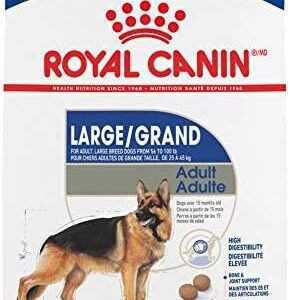Diazepam (Valium) is a prescription medication commonly used in veterinary medicine to treat various conditions in dogs, including anxiety, seizures, and muscle spasms. This comprehensive guide will help you understand how to use our Diazepam Dosage Calculator safely and effectively, while emphasizing the importance of veterinary supervision.
document.addEventListener('DOMContentLoaded', function() { const calculateBtn = document.getElementById('calculate-btn'); calculateBtn.addEventListener('click', calculateDosage); // Convert weight between kg and lbs function convertWeight(weight, unit) { return unit === 'kg' ? weight * 2.20462 : weight; } function calculateDosage() { // Get input values const weightInput = parseFloat(document.getElementById('dog-weight').value); const weightUnit = document.getElementById('weight-unit').value; const age = parseFloat(document.getElementById('dog-age').value); const purpose = document.getElementById('purpose').value; const formulation = document.getElementById('formulation').value; const liverFunction = document.getElementById('liver-function').value; // Validate inputs if (!weightInput || !age || !purpose || !formulation) { alert('Please fill in all required fields'); return; } // Convert weight to kg for calculations const weightLbs = convertWeight(weightInput, weightUnit); const weightKg = weightLbs / 2.20462; // Calculate dosage based on purpose and weight const dosage = calculatePurposeDosage(weightKg, purpose, liverFunction, formulation); // Display results displayResults(dosage, purpose, liverFunction); } function calculatePurposeDosage(weightKg, purpose, liverFunction, formulation) { let baseDosage = { amount: 0, unit: '', frequency: '', maxDaily: 0 }; // Base dosage calculations (mg/kg) switch(purpose) { case 'anxiety': baseDosage.amount = weightKg * 0.2; baseDosage.frequency = 'Every 8-12 hours as needed'; baseDosage.maxDaily = weightKg * 0.6; break; case 'seizure': baseDosage.amount = weightKg * 0.5; baseDosage.frequency = 'Every 8 hours as needed'; baseDosage.maxDaily = weightKg * 2; break; case 'spasm': baseDosage.amount = weightKg * 0.3; baseDosage.frequency = 'Every 8 hours as needed'; baseDosage.maxDaily = weightKg * 1.2; break; case 'sedation': baseDosage.amount = weightKg * 0.2; baseDosage.frequency = 'As directed by veterinarian'; baseDosage.maxDaily = weightKg * 0.6; break; } // Adjust for liver function if (liverFunction === 'mild' || liverFunction === 'unknown') { baseDosage.amount *= 0.75; baseDosage.maxDaily *= 0.75; } // Convert to appropriate units based on formulation switch(formulation) { case 'tablet2': baseDosage.unit = '2mg tablets'; baseDosage.amount = baseDosage.amount / 2; baseDosage.maxDaily = baseDosage.maxDaily / 2; break; case 'tablet5': baseDosage.unit = '5mg tablets'; baseDosage.amount = baseDosage.amount / 5; baseDosage.maxDaily = baseDosage.maxDaily / 5; break; case 'tablet10': baseDosage.unit = '10mg tablets'; baseDosage.amount = baseDosage.amount / 10; baseDosage.maxDaily = baseDosage.maxDaily / 10; break; case 'injectable': baseDosage.unit = 'ml'; baseDosage.amount = baseDosage.amount / 5; baseDosage.maxDaily = baseDosage.maxDaily / 5; break; } return baseDosage; } function displayResults(dosage, purpose, liverFunction) { // Round to 2 decimal places const roundedDose = Math.round(dosage.amount * 100) / 100; const roundedMax = Math.round(dosage.maxDaily * 100) / 100; // Display the dosage document.getElementById('dose-amount').textContent = `${roundedDose} ${dosage.unit}`; // Display frequency document.getElementById('frequency').textContent = dosage.frequency; // Display maximum daily dose document.getElementById('max-daily').textContent = `${roundedMax} ${dosage.unit} total per day`; // Generate safety information const safetyInfo = document.getElementById('safety-info'); safetyInfo.innerHTML = ''; const safetyList = [ "Do not stop medication abruptly - consult your vet for tapering instructions", "Store medication securely away from children and pets", "Keep track of doses given and timing", "Do not combine with other sedatives or anti-anxiety medications", "Effects may take 1-2Important Disclaimer
Diazepam is a controlled substance that requires a veterinary prescription. This guide and calculator are for informational purposes only and should never replace professional veterinary guidance. Always follow your veterinarian’s specific instructions.
Common Uses of Diazepam in Dogs
Veterinarians may prescribe diazepam for various conditions:
- Seizure management
- Anxiety disorders
- Muscle spasms
- Pre-surgical sedation
- Appetite stimulation
- Travel anxiety
- Noise phobias
Read more about Valium/Diazepam for dogs dosage, side effects, benefits…
Standard Dosing Guidelines
The typical dosage ranges for diazepam in dogs vary based on the condition being treated:
General Dosing Chart
| Condition | Dosage Range (mg/kg) | Frequency |
|---|---|---|
| Anxiety | 0.5-2.0 mg/kg | Every 4-8 hours as needed |
| Seizures | 0.5-1.0 mg/kg | Every 4-8 hours as needed |
| Muscle Spasms | 0.5-2.0 mg/kg | Every 6-8 hours as needed |
| Pre-surgical | 0.1-0.5 mg/kg | Single dose |
Weight-Based Quick Reference (Using 5mg tablets)
| Dog’s Weight (lbs) | Typical Dose Range (mg) | Tablets (5mg) |
|---|---|---|
| 5-10 lbs | 1-2 mg | ¼-½ tablet |
| 11-20 lbs | 2-4 mg | ½-1 tablet |
| 21-40 lbs | 4-8 mg | 1-1½ tablets |
| 41-70 lbs | 8-12 mg | 1½-2½ tablets |
| 71-90 lbs | 12-16 mg | 2½-3 tablets |
| Over 90 lbs | 16-20 mg | 3-4 tablets |
How to Use the Diazepam Dosage Calculator
Step 1: Gather Required Information
Before using the calculator, have the following information ready:
- Your dog’s exact weight
- The condition being treated
- The strength of diazepam tablets prescribed
- Your veterinarian’s specific instructions
Step 2: Enter Dog’s Information
- Input your dog’s weight
- Select the appropriate unit (pounds or kilograms)
- Choose the condition being treated
- Select the tablet strength available
Step 3: Review the Results
The calculator will provide:
- Recommended dosage range in milligrams
- Number of tablets or portions needed
- Suggested frequency of administration
- Duration of treatment (if applicable)
Important Considerations for Diazepam Use
Contraindications
Diazepam may not be suitable for dogs with:
- Liver disease
- Kidney disease
- Glaucoma
- Pregnancy
- History of aggression
- Certain muscle conditions
Potential Side Effects
Monitor your dog for:
- Sedation or drowsiness
- Ataxia (unsteady gait)
- Increased appetite
- Changes in behavior
- Confusion
- Respiratory changes
Drug Interactions
Diazepam can interact with various medications, including:
- Other sedatives or tranquilizers
- Certain antidepressants
- Some anticonvulsants
- Certain antifungal medications
- Some antibiotics
Safe Administration Guidelines
1.Timing
- Follow prescribed intervals strictly
- Keep a log of doses given
- Note any changes in your dog’s behavior
2.Storage
- Keep at room temperature
- Store in a dark, dry place
- Keep secure from children and pets
- Don’t store in bathroom cabinets
3. Administration Tips
- Give with or without food
- Use pill pockets if needed
- Consider liquid form for small dogs
- Always follow with water
Emergency Situations
Signs of Overdose
- Severe drowsiness
- Confusion
- Loss of coordination
- Slow breathing
- Unconsciousness
When to Contact Your Vet Immediately
- Signs of allergic reaction
- Severe side effects
- Missed doses
- Accidental double dosing
- Changes in behavior or condition
Long-term Considerations
Tolerance and Dependence
- Monitor effectiveness over time
- Don’t stop treatment suddenly
- Follow veterinary guidance for discontinuation
- Watch for withdrawal symptoms
Regular Monitoring
- Schedule regular check-ups
- Report any concerns promptly
- Monitor liver function as recommended
- Track behavioral changes
Tips for Successful Treatment
Maintain Consistency
- Give doses at same times daily
- Use a medication schedule chart
- Set phone reminders
- Keep backup supply available
Track Progress
- Keep a diary of symptoms
- Note effectiveness of each dose
- Record any side effects
- Monitor behavioral changes
Environmental Management
- Create calm spaces
- Reduce triggers when possible
- Maintain regular routine
- Use in conjunction with behavior modification
Calculator Limitations
Understanding the calculator’s limitations is crucial:
- It provides general guidance only
- Individual dogs may need different doses
- It doesn’t account for all health conditions
- Veterinary instructions take precedence
- Regular adjustments may be needed
Frequently Asked Questions
Q: How quickly does diazepam work in dogs?
A: Effects usually begin within 30-60 minutes of oral administration.
Q: Can my dog become dependent on diazepam?
A: Yes, long-term use can lead to physical dependence. Never stop treatment suddenly.
Q: What if I miss a dose?
A: Contact your veterinarian for guidance. Don’t double dose.
Q: Can diazepam be used with other medications?
A: Only under veterinary supervision due to potential interactions.
Conclusion
While the Diazepam Dosage Calculator is a valuable tool for understanding medication dosages, it should always be used in conjunction with professional veterinary guidance. Diazepam is a powerful medication that requires careful monitoring and precise administration.
Remember:
- Always follow veterinary instructions
- Monitor your dog closely
- Report any concerns promptly
- Keep accurate records
- Never adjust doses without consultation
Your veterinarian remains the best resource for specific questions about your dog’s diazepam treatment. Use this calculator and guide as supplementary tools to help you better understand and manage your dog’s medication regimen safely and effectively.
























